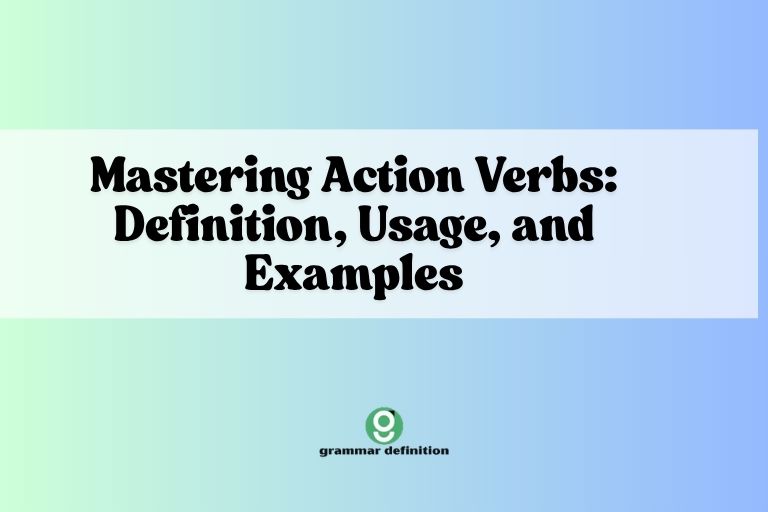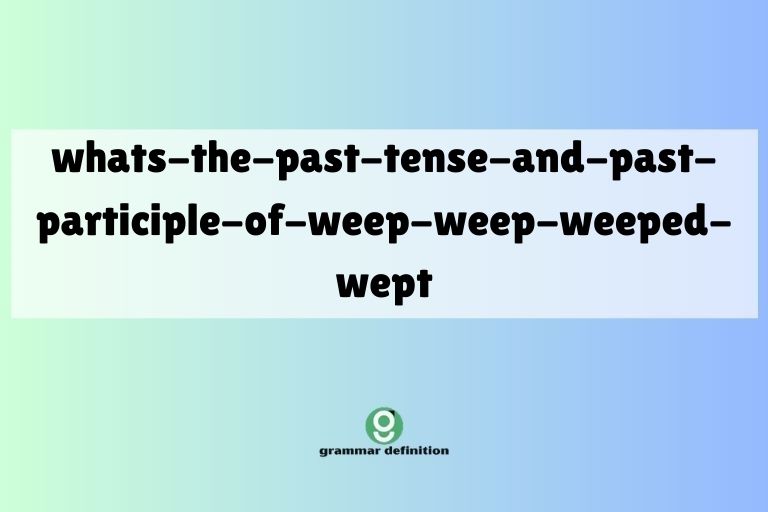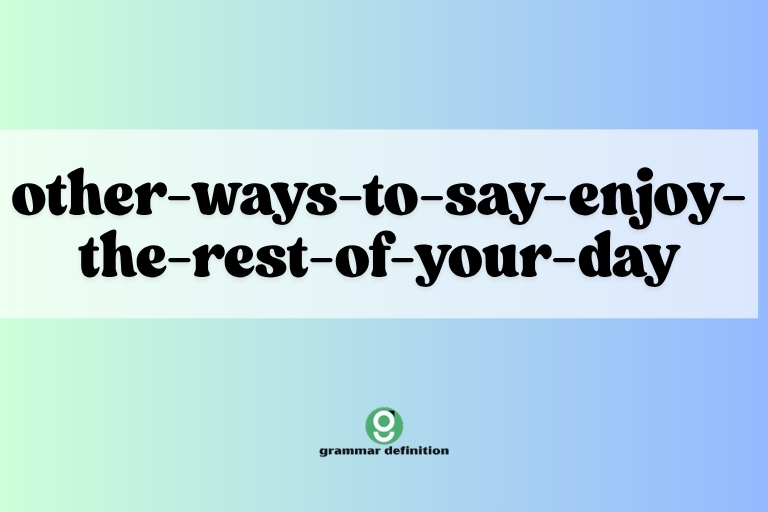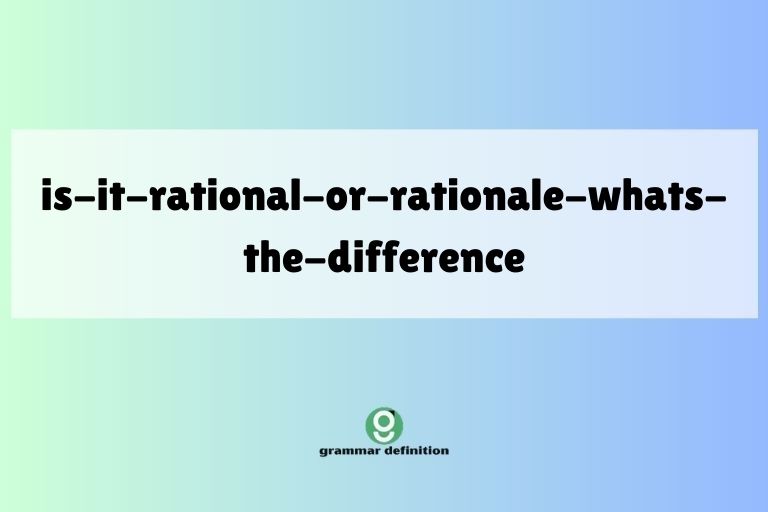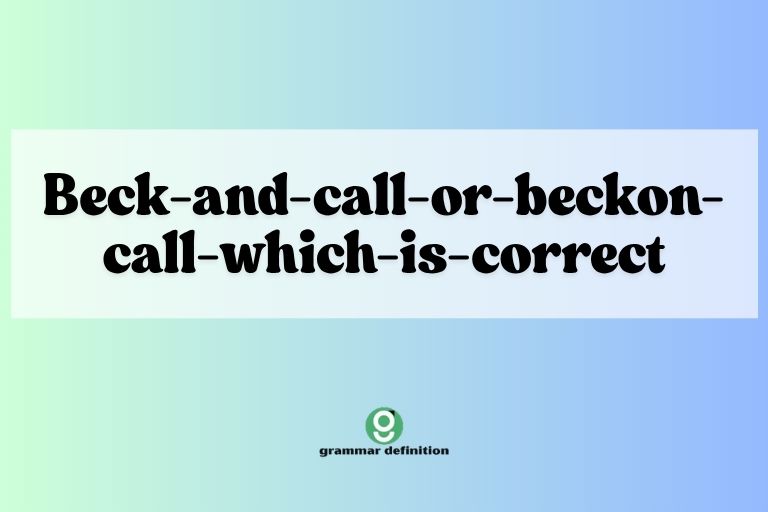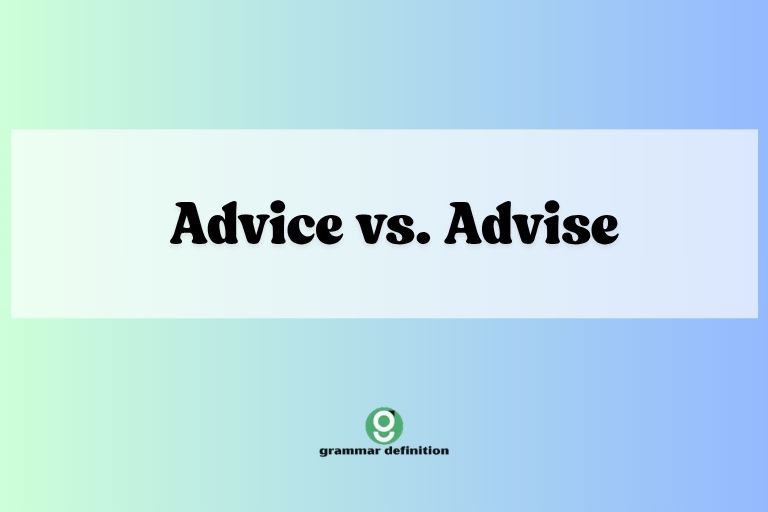Ambiguous vs. Ambivalent: Mastering the Nuances of Meaning
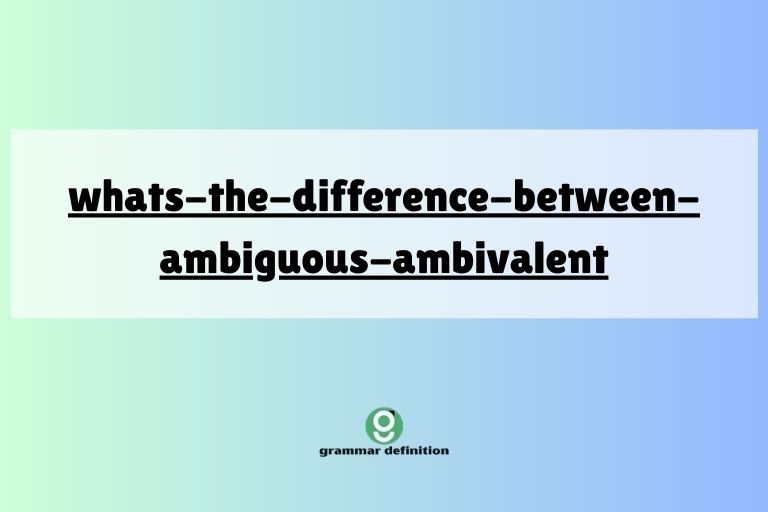
Understanding the subtle differences between words that sound alike or seem related is crucial for effective communication. The terms “ambiguous” and “ambivalent” are frequently confused, yet they convey distinct meanings.
This article aims to clarify these differences, providing a comprehensive guide to their definitions, usages, and common pitfalls. Whether you’re an English language learner, a student, or simply someone who wants to improve their vocabulary, this guide will equip you with the knowledge to use these words accurately and confidently.
By exploring real-world examples and practice exercises, you’ll gain a deeper understanding of these terms and enhance your overall communication skills.
Mastering the distinctions between ‘ambiguous’ and ‘ambivalent’ will not only refine your writing and speaking but also enable you to interpret information more accurately. The ability to discern these nuances is essential in various contexts, from academic writing to everyday conversations.
This article breaks down the complexities of each word, providing clear definitions, structural analyses, and practical examples to help you internalize their correct usage.
Table of Contents
- Introduction
- Definitions: Ambiguous vs. Ambivalent
- Structural Breakdown
- Types and Categories
- Examples
- Usage Rules
- Common Mistakes
- Practice Exercises
- Advanced Topics
- FAQ
- Conclusion
Definitions: Ambiguous vs. Ambivalent
The words “ambiguous” and “ambivalent” are distinct in meaning, though often confused. Understanding their specific definitions is crucial for precise communication.
Ambiguous
Ambiguous means open to more than one interpretation; having a double meaning; unclear or inexact because a choice between alternatives has not been made. It describes something that lacks clarity and can be understood in multiple ways. Ambiguity often arises from vague wording, unclear context, or grammatical structures that allow for different readings. The word stems from the Latin ambiguus, meaning “doubtful” or “wavering.” An ambiguous statement leaves the listener or reader uncertain about the intended meaning. It is important to note that ambiguity is often unintentional but can be used deliberately for rhetorical effect or humor.
Ambivalent
Ambivalent, on the other hand, refers to having mixed feelings or contradictory ideas about something or someone. It describes a state of emotional or psychological uncertainty, where a person holds both positive and negative attitudes simultaneously. Unlike ambiguity, which relates to unclear meaning, ambivalence relates to conflicting feelings. The term comes from the German word Ambivalenz, coined by psychiatrist Eugen Bleuler, combining ambi (both) and valere (to be worth). An ambivalent person might feel both love and hate, attraction and repulsion, or enthusiasm and doubt towards the same thing. This internal conflict is central to the concept of ambivalence. Ambivalence is a common human experience, especially when dealing with complex decisions or relationships.
Structural Breakdown
Analyzing the structure of “ambiguous” and “ambivalent” can further clarify their distinct meanings and usages.
Ambiguous
The word “ambiguous” is an adjective. It is often used to describe nouns such as statements, situations, laws, or instructions.
The core of the word is the root “ambi-“, meaning “both” or “around,” and “-iguous,” related to “agere,” meaning “to drive” or “to lead.” The structure suggests being driven in two directions or having multiple possible paths. Grammatically, it can be modified by adverbs such as “highly,” “somewhat,” or “deliberately” to indicate the degree or intention of the ambiguity.
The word can also be used in comparative and superlative forms: “more ambiguous” and “most ambiguous.”
Ambivalent
“Ambivalent” is also an adjective. It describes a person’s feelings or attitudes.
The prefix “ambi-” again means “both,” and “-valent” comes from “valere,” meaning “to be worth” or “to be strong.” The structure implies having two conflicting values or strengths pulling in different directions. Like “ambiguous,” “ambivalent” can be modified by adverbs such as “deeply,” “slightly,” or “genuinely” to express the intensity of the conflicting feelings.
It also has comparative and superlative forms: “more ambivalent” and “most ambivalent.” It’s important to remember that “ambivalent” always refers to feelings or attitudes, not to external things or situations.
Types and Categories
Both “ambiguous” and “ambivalent” can be further categorized to understand their nuances in different contexts.
Types of Ambiguity
Ambiguity can be classified into several types:
- Lexical Ambiguity: This occurs when a word has multiple meanings. For example, the word “bank” can refer to a financial institution or the side of a river.
- Syntactic Ambiguity: This arises from the structure of a sentence, where the grammatical relationships between words are unclear. For example, “I saw the man on the hill with a telescope” could mean that the man has a telescope or that I used a telescope to see the man.
- Semantic Ambiguity: This occurs when the meaning of a sentence is unclear due to the vagueness of the words used. For example, “He is a good man” is ambiguous because “good” is subjective and can mean different things to different people.
- Referential Ambiguity: This happens when it is unclear which noun a pronoun refers to. For example, “John told Tom that he was wrong” is ambiguous because it’s unclear whether “he” refers to John or Tom.
Categories of Ambivalence
Ambivalence can be categorized based on the nature of the conflicting feelings:
- Emotional Ambivalence: This involves conflicting emotions, such as love and hate, joy and sadness, or excitement and fear.
- Cognitive Ambivalence: This involves conflicting beliefs or ideas, such as believing something is both right and wrong, good and bad, or true and false.
- Behavioral Ambivalence: This involves conflicting behaviors or actions, such as wanting to approach someone but also wanting to avoid them, or wanting to start a project but also wanting to procrastinate.
- Attitudinal Ambivalence: This involves conflicting attitudes towards something, such as liking a product but disliking its environmental impact, or supporting a political candidate but disagreeing with some of their policies.
Examples
Examining examples will solidify your understanding of how to use “ambiguous” and “ambivalent” correctly.
Examples of Ambiguous Sentences
The following table provides examples of ambiguous sentences and their possible interpretations. Understanding these ambiguities helps in crafting clearer, more precise language.
| Ambiguous Sentence | Possible Interpretation 1 | Possible Interpretation 2 |
|---|---|---|
| Visiting relatives can be tiresome. | The act of visiting relatives is tiring. | Relatives who visit are tiresome. |
| I saw her duck. | I saw her lower her head quickly. | I saw the duck that belongs to her. |
| The chicken is ready to eat. | The chicken is cooked and ready for someone to eat it. | The chicken is ready to be fed. |
| He fed her dog biscuits. | He gave dog biscuits to her dog. | He fed her the biscuits that were made of dog. |
| They are hunting dogs. | They are dogs that are used for hunting. | They are currently hunting dogs. |
| I need to stop by the bank. | I need to go to the financial institution. | I need to go to the riverbank. |
| The man saw the woman on the mountain with a telescope. | The man used a telescope to see the woman on the mountain. | The woman on the mountain had a telescope. |
| The sign said, “Fine for parking here.” | It is acceptable to park here. | You will be fined for parking here. |
| I only borrowed your car yesterday. | I borrowed your car only one day ago. | I only borrowed your car, I didn’t buy it. |
| She noticed the tablecloth was soiled. | She observed that the tablecloth was dirty. | She made the tablecloth dirty. |
| The professor said on Monday he would give an exam. | The professor announced on Monday that the exam would be given. | The professor will give the exam on Monday. |
| The shooting of the elephants was terrible. | The act of shooting the elephants was a terrible event. | The elephants were terrible at shooting. |
| I can’t tell you how much I enjoyed it. | I enjoyed it a lot. | I didn’t enjoy it at all. |
| He’s a really great history teacher. | He is a very good teacher of history. | He is a history teacher who is really old (great in age). |
| They passed the port at midnight. | They sailed past the harbor at midnight. | They drank port wine at midnight. |
| She is looking for a match. | She is trying to find someone to marry. | She is trying to find something to light a fire. |
| I left the keys on the table near the door. | The table is near the door, and that’s where I put the keys. | There’s a table specifically for keys near the door. |
| The old men and women were invited. | Both the old men and the old women were invited. | The old men and all women were invited. |
| The police can’t stop gambling. | The police are unable to prevent gambling. | The police should not stop gambling. |
| He doesn’t care for her cat. | He dislikes her cat. | He doesn’t look after her cat. |
| I am standing near the tree. | I am physically close to the tree. | My beliefs or values are close to the tree (metaphorically). |
| The light is bright. | The illumination is strong. | The person is intelligent (figuratively). |
| She is wearing a bow. | She has a ribbon in her hair. | She is bending at the waist (bowing). |
| The lawyer examined the witness. | The lawyer questioned the witness. | The lawyer performed a physical examination on the witness. |
| He saw the car speeding down the street. | He observed the car moving quickly. | He used a saw to cut the car that was speeding. |
Examples of Ambivalent Feelings
The following table provides examples of situations where someone might feel ambivalent and illustrates the conflicting emotions involved.
| Situation | Positive Feeling | Negative Feeling |
|---|---|---|
| Starting a new job | Excitement about new opportunities | Anxiety about the unknown |
| Moving to a new city | Anticipation of new experiences | Sadness about leaving friends and family |
| Eating a rich dessert | Pleasure from the taste | Guilt about the calories |
| Ending a long-term relationship | Relief from the difficulties | Sadness about the loss of companionship |
| Accepting a promotion | Pride in achievement | Fear of increased responsibility |
| Having a child | Joy and love | Worry and sleep deprivation |
| Buying a new car | Excitement about the new purchase | Regret about spending the money |
| Going on a blind date | Hope for meeting someone special | Apprehension about potential awkwardness |
| Attending a family reunion | Happiness at seeing relatives | Dread of family drama |
| Watching a horror movie | Thrill from the suspense | Fear and discomfort |
| Voting for a political candidate | Belief in their policies | Doubt about their character |
| Deciding whether to quit a job | Hope for a better opportunity | Fear of financial instability |
| Considering cosmetic surgery | Desire for improved appearance | Fear of the risks and pain |
| Investing in the stock market | Hope for financial gain | Anxiety about potential losses |
| Volunteering for a cause | Satisfaction from helping others | Frustration with the challenges |
| Learning a new skill | Excitement about personal growth | Frustration with the learning curve |
| Adopting a pet | Love and companionship | Responsibility and cost |
| Renovating a house | Excitement about improvements | Stress and disruption |
| Forgiving someone who hurt you | Desire for inner peace | Resentment and anger |
| Ending a friendship | Relief from negativity | Sadness about the loss of connection |
| Visiting a place with historical significance | Interest in learning about the past | Sadness or discomfort related to past events |
| Using social media | Connection with friends and family | Anxiety and feelings of inadequacy |
| Eating fast food | Convenience and taste | Concern for health and nutrition |
| Buying something on sale | Excitement about the bargain | Guilt about unnecessary spending |
| Participating in a competition | Excitement about the challenge | Fear of failure |
Usage Rules
To use “ambiguous” and “ambivalent” correctly, it is important to understand the specific rules that govern their usage.
Rules for Using “Ambiguous”
“Ambiguous” should be used to describe something that is unclear or open to multiple interpretations. Here are some rules to follow:
- Use with nouns: “Ambiguous” typically modifies nouns, such as statements, laws, words, or situations.
- Avoid with people: Do not use “ambiguous” to describe a person’s feelings or character. Instead, use it to describe their words or actions if they are unclear.
- Specify the source: Whenever possible, clarify what makes something ambiguous. For example, “The contract was ambiguous due to its vague wording.”
- Consider the context: The context can often resolve ambiguity. If the context is clear, something that might seem ambiguous in isolation may be easily understood.
Rules for Using “Ambivalent”
“Ambivalent” should be used to describe someone’s mixed or conflicting feelings. Here are some rules to follow:
- Use with people: “Ambivalent” typically describes people’s emotions, attitudes, or feelings toward something.
- Avoid with objects: Do not use “ambivalent” to describe objects, statements, or situations. Instead, use “ambiguous” or other appropriate adjectives like “uncertain” or “unclear.”
- Specify the object: It is helpful to specify what the ambivalence is about. For example, “She felt ambivalent about accepting the job offer.”
- Recognize the complexity: Ambivalence often involves a complex mix of emotions. Acknowledge this complexity when using the word.
Common Mistakes
One of the most common mistakes is using “ambiguous” when “ambivalent” is more appropriate, and vice versa. Here are some examples of common mistakes and their corrections:
| Incorrect | Correct | Explanation |
|---|---|---|
| He felt ambiguous about the decision. | He felt ambivalent about the decision. | “Ambiguous” describes unclear things, while “ambivalent” describes mixed feelings. |
| The instructions were ambivalent. | The instructions were ambiguous. | Instructions can be unclear (“ambiguous”) but do not have feelings (“ambivalent”). |
| She gave an ambivalent answer. | She gave an ambiguous answer. | Answers can be unclear (“ambiguous”) but do not have feelings (“ambivalent”). |
| I’m ambiguous about going to the party. | I’m ambivalent about going to the party. | Feelings of uncertainty should be described as “ambivalent.” |
| The situation is very ambivalent. | The situation is very ambiguous. | Situations can be unclear (“ambiguous”) but do not have feelings (“ambivalent”). |
Practice Exercises
Test your understanding of “ambiguous” and “ambivalent” with the following exercises.
Exercise 1: Identifying Ambiguity
Identify whether the following sentences are ambiguous. If they are, explain the possible interpretations.
| Sentence | Ambiguous? (Yes/No) | Explanation (if yes) |
|---|---|---|
| The artist painted a beautiful picture. | No | |
| I saw the man with the binoculars. | Yes | Did I use the binoculars to see the man, or did the man have the binoculars? |
| She is a talented musician. | No | |
| The old car was parked on the street. | No | |
| The dog ran after the car. | No | |
| The judge sentenced the criminal. | No | |
| The boat was near the bank. | Yes | Is the bank a financial institution, or the side of a river? |
| I need to drop off the package. | No | |
| The cat sat on the mat. | No | |
| The reporter interviewed the celebrity. | No |
Exercise 2: Recognizing Ambivalence
Decide whether the following sentences correctly use the word “ambivalent.” If not, correct them.
| Sentence | Correct? (Yes/No) | Corrected Sentence (if no) |
|---|---|---|
| She felt ambivalent about leaving her job. | Yes | |
| The contract was ambivalent. | No | The contract was ambiguous. |
| He is ambivalent about the new policy. | Yes | |
| The instructions were ambivalent. | No | The instructions were ambiguous. |
| I am ambivalent about moving to a new city. | Yes | |
| The situation is ambivalent. | No | The situation is ambiguous/uncertain. |
| She gave an ambivalent response. | No | She gave an ambiguous response. |
| He felt ambivalent towards his old friend. | Yes | |
| The rules were ambivalent. | No | The rules were ambiguous. |
| I’m ambivalent about taking the test. | Yes |
Advanced Topics
For advanced learners, exploring “ambiguous” and “ambivalent” in specialized contexts can provide a deeper understanding.
Ambiguity in Literature
Ambiguity is a powerful literary device used to create layers of meaning and invite readers to interpret texts in multiple ways. Authors may intentionally use ambiguous language to evoke uncertainty, explore complex themes, or reflect the subjective nature of reality.
For instance, a character’s motivations might be left deliberately ambiguous, allowing readers to project their own interpretations onto the narrative. Poetry, in particular, often relies on ambiguity to create rich and evocative imagery, where words and phrases can resonate with multiple meanings.
The strategic use of ambiguity can enhance the depth and complexity of a literary work, challenging readers to engage actively with the text and consider different perspectives.
Ambivalence in Psychology
In psychology, ambivalence is recognized as a common and often unavoidable human experience. It refers to the simultaneous existence of contradictory feelings or attitudes towards a person, object, or situation.
This internal conflict can manifest in various ways, such as feeling both love and hate towards a family member, or wanting to pursue a goal while also fearing the potential consequences. Ambivalence is often associated with decision-making, as individuals weigh the pros and cons of different options.
Extreme or unresolved ambivalence can lead to psychological distress, anxiety, and difficulty in making choices. Understanding ambivalence is crucial in therapeutic contexts, where therapists help individuals explore and manage their conflicting emotions to promote psychological well-being and facilitate personal growth.
FAQ
Here are some frequently asked questions about “ambiguous” and “ambivalent.”
- What is the main difference between “ambiguous” and “ambivalent”?
The primary difference is that “ambiguous” refers to something that is unclear or has multiple interpretations, while “ambivalent” refers to having mixed or conflicting feelings about something. Ambiguity relates to a lack of clarity, whereas ambivalence relates to conflicting emotions.
- Can a person be ambiguous?
While you can’t directly describe a person as “ambiguous,” you can say that their words, actions, or behavior are ambiguous if they are unclear or open to multiple interpretations. For example, “His ambiguous response left us wondering what he really meant.”
- Is it always bad for something to be ambiguous?
Not necessarily. In some contexts, ambiguity can be undesirable, especially when clarity is essential, such as in legal documents or instructions. However, in literature and art, ambiguity can be a deliberate and effective technique for creating depth and inviting interpretation.
- How can I avoid being ambiguous in my writing?
To avoid ambiguity, use precise language, provide sufficient context, and be aware of potential multiple interpretations of your words. Reread your writing from the perspective of someone unfamiliar with the topic to identify potential areas of confusion.
- Can I feel ambivalent about a concept?
Yes, you can feel ambivalent about a concept if you have conflicting thoughts or feelings about it. For example, you might feel ambivalent about the concept of artificial intelligence, recognizing its potential benefits while also being concerned about its ethical implications.
- Is ambivalence a sign of weakness?
No, ambivalence is a normal human experience and does not necessarily indicate weakness. It often reflects a thoughtful and nuanced understanding of complex issues. Acknowledging and exploring ambivalence can lead to greater self-awareness and more informed decision-making.
- How can I deal with feelings of ambivalence?
Dealing with ambivalence involves acknowledging and exploring your conflicting feelings. Try to identify the reasons behind each feeling and weigh the pros and cons of different perspectives. Talking to a trusted friend, family member, or therapist can also provide valuable support and guidance.
- What are some synonyms for “ambiguous” and “ambivalent”?
Synonyms for “ambiguous” include unclear, vague, equivocal, and indefinite. Synonyms for “ambivalent” include uncertain, conflicted, hesitant, and indecisive.
- Can animals experience ambivalence?
While we cannot know for sure what animals experience internally, behavioral scientists observe behaviors that suggest ambivalence. For instance, an animal may approach food cautiously, displaying both interest and fear, which could indicate a form of ambivalence.
- How does cultural context affect the perception of ambiguity?
Cultural context significantly influences the perception of ambiguity. What is considered ambiguous in one culture may be perfectly clear in another due to differences in communication styles, social norms, and shared knowledge. High-context cultures, for example, often rely on implicit communication, which may appear ambiguous to individuals from low-context cultures that value explicit communication.
Conclusion
Distinguishing between “ambiguous” and “ambivalent” is essential for clear and effective communication. “Ambiguous” describes something unclear or open to multiple interpretations, while “ambivalent” describes conflicting feelings or attitudes.
Understanding these nuances can significantly improve your writing and speaking skills. By mastering the definitions, structural elements, and usage rules of these words, you can avoid common mistakes and express yourself with greater precision.
Remember to consider the context and specify the source of ambiguity or the object of ambivalence to ensure clarity.
Continue practicing and exploring these concepts to solidify your understanding. Pay attention to how these words are used in various contexts, such as literature, news articles, and everyday conversations.
By actively engaging with the language, you will develop a deeper appreciation for its subtleties and complexities. With consistent effort, you can confidently use “ambiguous” and “ambivalent” to convey your intended meaning and enhance your overall communication skills.

